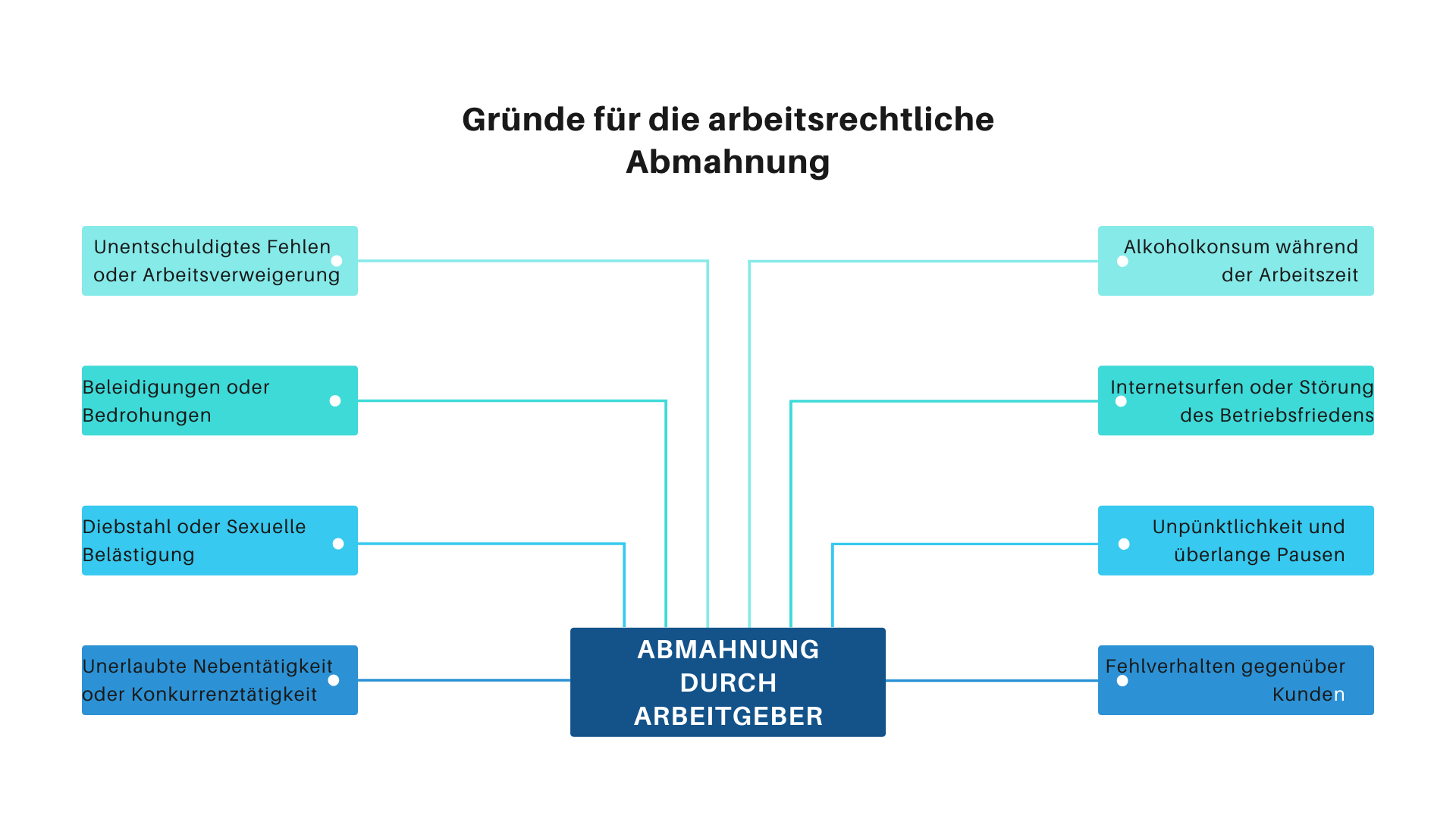Form and Content of a Warning
With a warning, the employer addresses a breach of the employee’s duties arising from the employment contract. Besides disciplining the employee, the employer’s primary goal is to protect themselves from further violations. A warning is often the necessary first step towards termination.
The legal basis for a warning is found in § 314 para. 2 of the German Civil Code (BGB) in conjunction with the principle of proportionality. In principle, a warning can be issued informally, meaning that even a verbal warning is permissible.
In principle, the warning can be issued informally, so that a verbal warning is also permissible in this respect.
However, regardless of the form, case law from labor courts requires that a warning contain four key components to fulfill its reprimand and warning function:
The facts of the breach must be precisely described, including location, date, and time.
The employer must classify the employee’s behavior as a violation of the contract.
The employer must unambiguously demand that the employee change their behavior.
The employer must threaten the employee with labor law consequences.
For example, if the reference to potential labor law consequences is missing, it is not a warning but a reprimand, which cannot serve as a basis for a subsequent dismissal.
Exemption from Issuing a Warning
A warning is not required if the employee’s breach is particularly severe and immediate termination is justified. It is also unnecessary if the employee has violated the loyalty or trust relationship, or if there is no expectation that the employee will change their behavior in the future (Federal Labor Court ruling from February 21, 2005 – 2 AZR 280/04).
A warning is also dispensable if the employee's behaviour has affected the area of loyalty or trust or if a change in the employee's behaviour is not to be expected in the future (BAG 21.02.2005 - 2 AZR 280/04).
Additionally, a warning is not needed if a dismissal for the same behavior has already been issued and later withdrawn. In this case, the first dismissal replaces the warning.
Timing and Duration of a Warning
If multiple warnings are issued for the same misconduct, the employer may only dismiss the employee for another violation if the last warning particularly emphasized labor law consequences (for example, if the most recent warning was labeled as the „Final Warning“).
This requirement exists because the warning loses its warning function if it is not followed by a dismissal.
Employee’s Response
If several warnings are issued in respect of the same misconduct, the employer may only terminate the contract in the event of a further breach of duty if the last warning threatened labour law consequences in a particularly forceful manner (e.g. if the last warning was entitled "Last warning").
The reason for this requirement is that the warning loses its warning function if the warning is not later complied with by cancellation.
V. Reaction of the employee
The warning must be included in the employee’s personnel file. The employee can request the removal of the warning from the file if:
the warning was not properly issued,
the warning is based on false factual claims,
the warning is based on an incorrect legal assessment of the employee’s behavior,
the principle of proportionality has been violated,
the employer no longer has a legitimate interest in keeping the warning in the personnel file.

Important Note: The content of this article has been prepared to the best of our knowledge and belief. However, due to the complexity and constant evolution of the subject matter, we must exclude liability and warranty. Important Notice: The content of this article has been created to the best of our knowledge and understanding. However, due to the complexity and constant changes in the subject matter, we must exclude any liability and warranty.
If you need legal advice, feel free to call us at 0221 – 80187670 or email us at info@mth-partner.de.
Attorneys from Cologne provide nationwide advice in employment law.


One Response